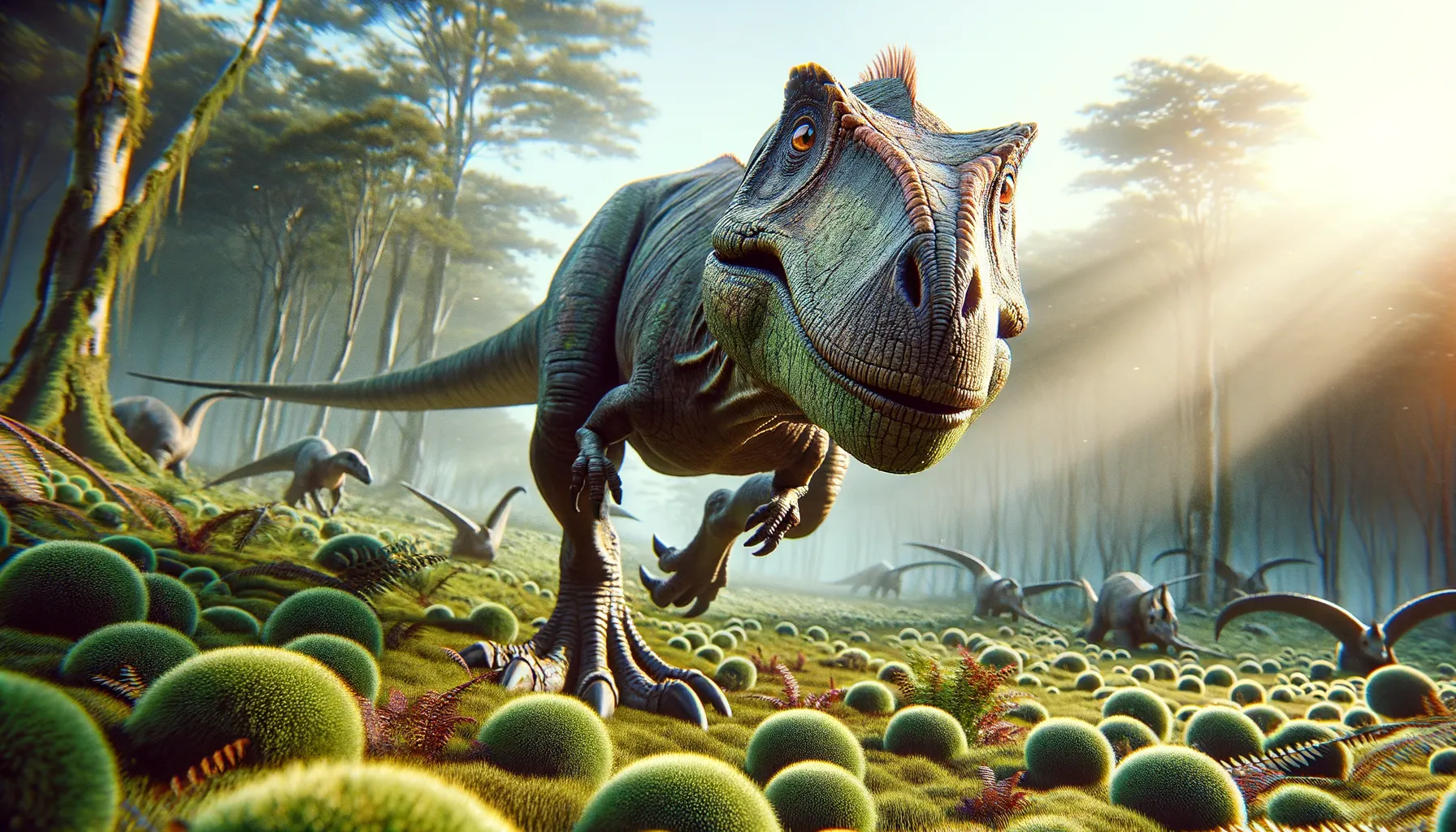
Altirhinus
The high-snouted grazer of the Cretaceous.
Period
Cretaceous
Length
Up to 8 meters long.
Height
Around 2 meters at the hips.
Weight
Approximately 1,000 to 2,000 kg.
Altirhinus was a plant-eating dinosaur that roamed the Earth during the early Cretaceous period. It was known for its distinctive high-arched snout, possibly used for efficient feeding on vegetation. This dinosaur was a part of the iguanodont family, characterized by its robust limbs and versatile hands. Its fossils provide valuable insights into the evolution of early birds and the ecosystems of its time.
Diet
Altirhinus was herbivorous, primarily feeding on conifers, cycads, and other ancient plants. Its specialized teeth allowed it to efficiently process fibrous plant material.
Hunting
As a herbivore, Altirhinus did not hunt; instead, it foraged for plants. It likely used its beak-like mouth to graze on vegetation low to the ground.
Environmental challenges
Altirhinus faced challenges from predators like carnivorous dinosaurs roaming the same regions. Climate changes over the Cretaceous period could have also influenced the availability of vital plant resources. Navigating the dense forest habitats required its beak and forelimbs adaptations to reach food. Rainy season flooding might have affected its habitual grazing lands, forcing migrations.
Speed
Moderate, likely similar to modern herbivores.
Lifespan
Estimated around 20-30 years.
First discovery
Found in Mongolia in the mid-20th century.
Fun Facts
- Altirhinus was a plant-eating dinosaur that lived during the early Cretaceous period, around 125 to 112 million years ago.
- The name 'Altirhinus' means 'high nose' and refers to its distinctively shaped, large nasal area.
- It was a medium-sized dinosaur, roughly 26 feet long, and walked primarily on its hind legs but could also move on all fours.
- Altirhinus had powerful jaws and a beak-like mouth that helped it chew tough plant material.
- Fossils of Altirhinus have mainly been found in Mongolia, giving us a glimpse into the diverse dinosaur life in that region.
- Its discovery in the 1990s helped scientists better understand the diversity of herbivorous dinosaurs during its time.
- Altirhinus is part of the Iguanodontian group, known for having thumb spikes which they might have used for defense.
Growth and Development
Young Altirhinus likely developed slowly, requiring years to reach adult size. Juveniles may have relied on staying in groups for protection from predators. The gradual growth permitted the development of necessary adaptations, such as stronger limbs for movement. Development would have been influenced by environmental conditions, guiding evolutionary adaptations over generations.
Habitat
Altirhinus inhabited lush forest regions abundant with diverse plant life. Its environment was likely warm with periods of intense rainfall and seasonal variations. The availability of water and dense vegetation guided its movement and living patterns. Exercising nomadic behavior, Altirhinus might have migrated in response to seasonal changes affecting food resources.
Interaction with other species
Living in varied ecosystems, Altirhinus shared its habitat with several dinosaur species and smaller creatures. Its primary threat came from large predators that roamed the forests. As a herd animal, interactions with other herbivores could have involved competition for resources. Additionally, symbiotic relationships with smaller species might have aided in cleaning parasites.
Natural lifespan
Lived a natural lifespan of around 20 to 30 years.
Reproduction
Altirhinus likely reproduced by laying eggs in nests built on the ground. Parental care might have included guarding the nest from predators and environmental threats. Female Altirhinus possibly chose secluded locations to ensure egg safety and avoid detection by predators.
Social behaviour
Being a herd animal, Altirhinus probably had complex social structures. Group living provided protection against predators and aid in rearing young. Social behaviors may have included vocal communication and cooperative foraging. Herds ensured the survival of individuals through protective circles around vulnerable members.
Fossil locations
Fossils of Altirhinus are primarily found in Mongolia, providing significant evidence of its existence. These sites reveal insights into the behavioral patterns and physical traits of Altirhinus. Fossil discoveries contributed substantially to understanding the biodiversity and ecological interactions during the Cretaceous period. The preservation of remains aided in reconstructing its habitat and lifestyle.
